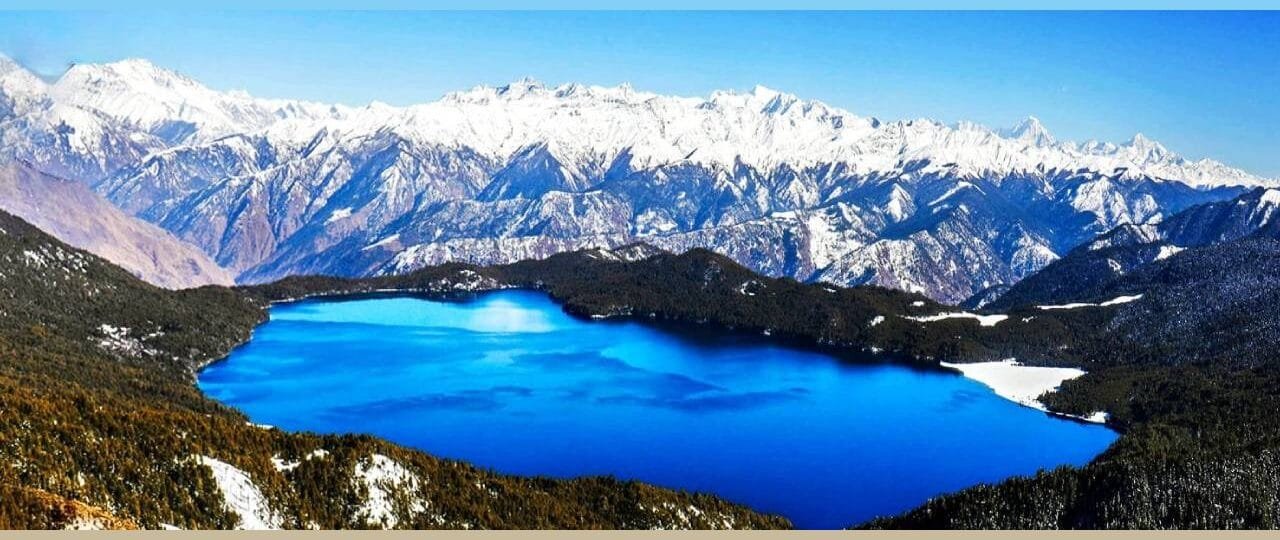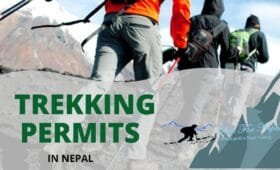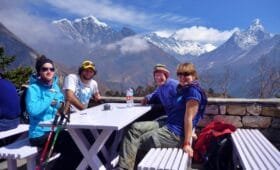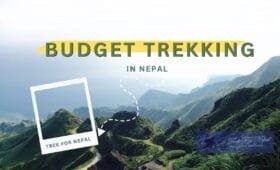Introduction: Discovering Rara Lake Nepal
Rara Lake Nepal is a pristine and remote gem nestled in the Himalayas. Located in the far-western region of Nepal, it’s one of the most breathtaking natural wonders in the country. With its deep blue waters surrounded by snow-capped peaks and lush forests, Rara Lake offers a serene escape from the hustle and bustle of daily life.
Often referred to as Nepal’s hidden paradise, the Rara Lake trek takes adventurers on a remarkable journey through some of the most untouched wilderness in the world. Whether you’re a seasoned trekker or simply looking to experience nature in its purest form, Rara Lake Nepal should be on your bucket list.
In this article, we’ll explore everything you need to know about Rara Lake Nepal, including its geographical significance, best times to visit, how to get there, what to expect on the trek, and essential tips for your journey.
Why Rara Lake Is a Must-Visit Destination
Rara Lake stands as the largest lake in Nepal, covering an area of 10.8 square kilometers and sitting at an altitude of 2,990 meters (9,810 feet) above sea level. Despite its size, it remains one of the most serene and remote destinations, largely untouched by mass tourism. The lake is located within Rara National Park, which is home to a wide array of wildlife, including musk deer, red pandas, and Himalayan tahr.
Here are some reasons why Rara Lake Nepal should be on your travel list:
- Pristine beauty: The crystal-clear waters of Rara Lake, framed by the towering Himalayan peaks, offer some of the most stunning views in Nepal.
- Solitude: Because it is located in a remote area, the trek to Rara Lake Nepal is far less crowded compared to other popular trekking destinations in Nepal.
- Wildlife and nature: Trekking through Rara National Park provides trekkers with an opportunity to spot rare wildlife and immerse themselves in a breathtaking natural environment.
- Cultural immersion: Along the trek, you’ll pass through traditional villages and encounter local cultures that are rooted in the Tibetan Buddhist tradition.
The Best Time to Visit Rara Lake Nepal
Choosing the right time to trek to Rara Lake Nepal is crucial for a successful and enjoyable experience. The ideal times to visit are:
1. Autumn (September to November)
- Clear skies and mild temperatures make this the peak trekking season. The views of the surrounding mountains and lake are at their best.
- Best for trekking: Trails are clear, and the weather is perfect for long walks.
2. Spring (March to May)
- Wildflowers bloom along the trail, adding color to the already beautiful landscape.
- Milder temperatures make it a great time for trekking, though the weather can still be a bit unpredictable at higher altitudes.
3. Avoid the Monsoon Season (June to August)
- Heavy rainfall during the monsoon makes the trails slippery and difficult, and there is an increased risk of landslides.
The Rara Lake Trek: What to Expect
The Rara Lake trek is a moderately challenging trek that offers trekkers an opportunity to experience the best of Nepal’s diverse landscapes. Here’s what you can expect along the way:
1. Trekking Routes
You can begin the trek from Nepalgunj or Surkhet. Both routes take approximately 6 to 8 days depending on the pace and altitude acclimatization. The trail passes through the following highlights:
- Breathtaking mountain views: As you make your way through remote villages, you’ll be treated to awe-inspiring views of the Himalayas.
- Dense forests: The trek takes you through lush forests of pine, fir, and rhododendron trees.
- Traditional villages: Along the way, you’ll pass through villages like Tallo and Chere, where you can witness the local way of life.
- High-altitude meadows: Trekking higher up, you’ll encounter wide-open meadows filled with wildflowers.
2. Rara Lake: The Destination
After several days of trekking, you’ll arrive at Rara Lake, and the sight is nothing short of magical. Surrounded by snow-capped peaks, the lake’s clear blue water reflects the beauty of the surrounding landscape. The serenity of the lake, coupled with the sound of the wind through the trees, creates a peaceful atmosphere that makes all the effort worthwhile.
Flora and Fauna of Rara National Park
Rara National Park is home to a rich variety of wildlife, and trekking through this area offers incredible opportunities for nature lovers to spot rare species. Some of the animals you may encounter during your trek include:
- Musk Deer
- Red Panda
- Himalayan Tahr
- Leopards
- Wild boars and bears
The park is also home to over 200 species of birds, making it a paradise for birdwatchers. Commonly spotted birds include the Himalayan Griffon, Eurasian Griffon, and the Red-Billed Chough.
What to Pack for the Rara Lake Trek
Packing wisely for the Rara Lake trek is key to having a safe and enjoyable experience. Here’s a basic checklist of essentials to pack:
- Trekking boots: Choose comfortable, waterproof boots suitable for uneven terrain.
- Warm clothing: Even in the warmer months, temperatures can drop at night, so pack layered clothing.
- Sleeping bag: A high-altitude sleeping bag rated for low temperatures is necessary.
- Water purification tablets: Safe drinking water may not always be available, so bring purification tablets or a portable water filter.
- Snacks: High-energy snacks like granola bars, nuts, and dried fruits will help keep your energy up during the trek.
- First aid kit: Basic medications, bandages, and other essential items.
How to Reach Rara Lake Nepal
Getting to Rara Lake involves several steps:
- Fly to Nepalgunj: You can catch a flight from Kathmandu to Nepalgunj, the closest major city to the start of the trek.
- Travel to Talcha Airport: From Nepalgunj, you can take a small domestic flight to Talcha Airport, which is located near the lake. Alternatively, you can travel by road to Surkhet and then start your trek from there.
- Trek to Rara Lake: The final leg of the journey involves trekking to the lake from either Nepalgunj or Surkhet, depending on your starting point.
Cultural Insights: Villages and People Along the Rara Lake Trek
The Rara Lake trek offers trekkers the opportunity to experience the local culture of Nepal’s remote far-western region. The people of this region, particularly those from the Khadka and Chhetri communities, are deeply connected to Tibetan Buddhism and traditional ways of life. Along the trek, you can visit monasteries, interact with locals, and learn about their customs, cuisine, and daily routines.
Conclusion: Why Choose the Rara Lake Trek
The Rara Lake trek is an exceptional adventure that combines natural beauty, cultural immersion, and the opportunity to disconnect from the modern world. It’s a perfect destination for trekkers seeking peace and solitude in one of Nepal’s most beautiful, untouched regions. With stunning views, diverse wildlife, and a serene atmosphere, Rara Lake Nepal is a once-in-a-lifetime experience that will stay with you long after the trek is over.
Are you ready for your next adventure? Start planning your Rara Lake trek today, and experience the magic of this tranquil escape in the Himalayas!
FAQs About Rara Lake Trek
- How difficult is the Rara Lake Trek?
- The Rara Lake trek is considered moderate, but trekkers should be prepared for high-altitude trekking. Proper acclimatization and physical preparation are essential.
- When is the best time to visit Rara Lake?
- The best times to visit are during autumn (September to November) and spring (March to May) when the weather is clear and temperatures are moderate.
- Can I hire a guide and porter for the Rara Lake Trek?
- Yes, hiring a local guide and porter is highly recommended. They will help ensure your safety, enhance your experience, and assist with carrying gear.
- How can I get to Rara Lake Nepal?
- You can fly to Nepalgunj, then take a short flight to Talcha Airport, followed by a trek to Rara Lake.
- What wildlife can I see on the Rara Lake Trek?
- Rara National Park is home to various wildlife, including musk deer, red pandas, Himalayan tahr, and leopards.
Are you ready to take on the Rara Lake Trek? Start planning your adventure now, and don’t forget to share your experiences with us in the comments below. Have any questions or tips for fellow trekkers? We’d love to hear from you!




